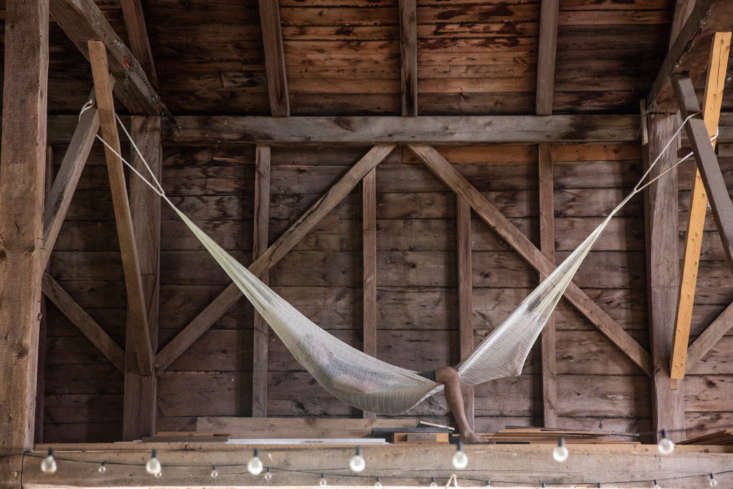Maine’s newest farmers are doing it all: When thirtysomethings Katee Lafleur and Andrew White found a 35-acre property on Maine Farm Link, it housed a rambling 1835 farmhouse in need of an update and an early 19th-century barn in danger of falling in, all at the end of a two-mile-long dirt road, 24 miles from the coast in Maine’s wooded midcoast region.
Just two years later, High Ridge Farm is thrumming with activity: The couple has turned the land into a self-sustaining farm with produce, herbs, flowers, chickens, and pigs; they’ve shored up the barn (complete with a new foundation and root cellar) and updated the farmhouse room by room, with a new kitchen still to come and rooms for rent on Airbnb (see the full interiors on Remodelista). And they serve up taco nights on Fridays and Sunday night land-to-table dinners once a month, in which everything they grow appears on the plate, and the cider they press from old apple orchards fills the glasses.
Here are 13 ideas to take away, even if you don’t have a rambling farm in midcoast Maine.
Photography by Greta Rybus for Gardenista.
1. Leave it a little wild.

2. Cut and split your own wood.

3. Embrace works in progress.

4. Add a standing-seam metal roof.

5. Use everything.

6. Give chickens free rein.

7. Raise pigs in the woods.

8. Let the dogs have the run of the place.

9. Grow what you want to eat.

10. Restore old barns.

11. Serve dinner where it’s grown.

“What you see on the land, you’ll find on your plate—and in your glass,” the couple says, and they mean it, down to the tiniest component. For example: “The taco is the vessel through which we sell everything we grow and raise, process, and put up,” they explain, including the meat (and the braise it’s cooked in), the tomatillos and jalapeños for the salsa verde, the lettuces and scallions, and, soon, the corn for the tortillas. (For more info, see the food and drink offerings here.)
12. Forage for wild cider.

13. Kick back (occasionally).

More gardens and farms in the great state of Maine:
- 11 Garden Ideas to Steal from the Coast of Maine.
- Curb Appeal: A Classic New England Color Palette on Spruce Head in Maine.
- Landscape Architect Visit: Clamshell Alley on the Coast of Maine.









Have a Question or Comment About This Post?
Join the conversation